Classic French Fruit Tart
This post may contain affiliate links. Read my full disclosure policy.
Whip up a French fruit tart that could dazzle in the window of a fancy bakery—with its buttery shortbread crust, luscious vanilla custard, and a vibrant mix of fresh fruits, it’s a simple yet elegant treat for any occasion.
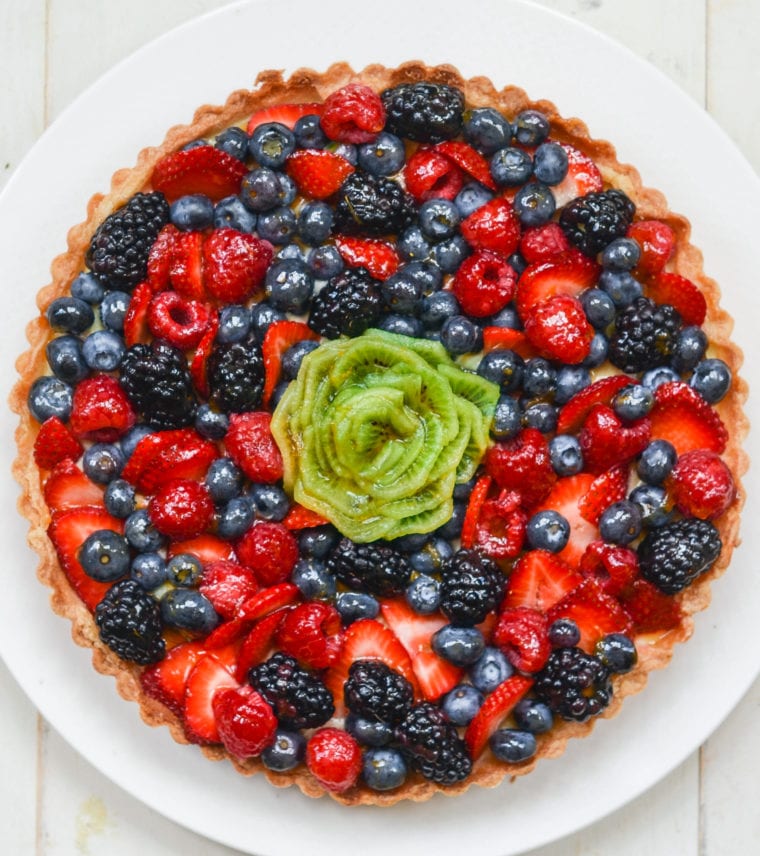
This classic French fruit tart combines three equally delicious elements: a crisp, buttery shortbread crust (or pâte sucrée), a creamy vanilla custard (or crême pâtissière), and heaps of fresh fruit. The recipe comes from my friend Lisa Kolb Ruland, the pastry chef behind the beautiful and inspiring blog Unpeeled. The fruit tart comes together easily but looks like it came straight out of a French pâtisserie window, and it tastes even better than it looks.
You’ll need a 9.5 x 1-inch fluted tart pan with a removable bottom for this recipe. These pans can be ordered online or found in any kitchen store (my local hardware store even carries them in their kitchenware section). Decorating the tart is the fun part. You can do a more traditional French design of carefully arranged fruit (see below), a more free-form fruit pattern, or a mix, like the one shown above. Just have fun with it—as long as you use ample fruit, it will look gorgeous!
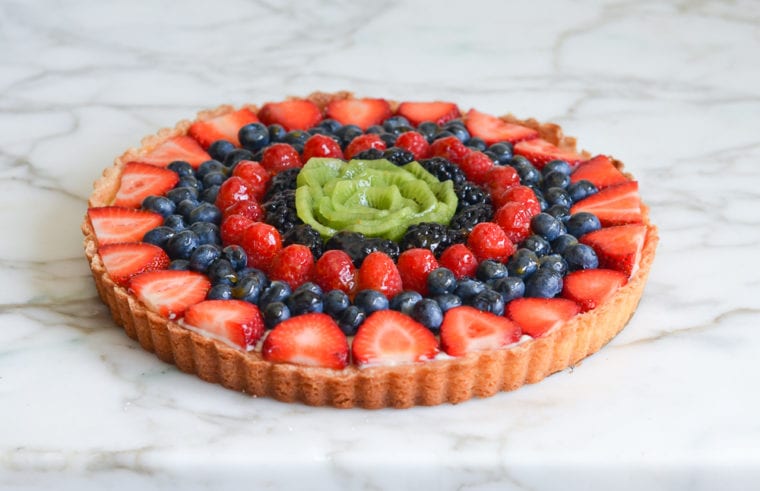
Table of Contents
What You’ll Need To Make A Classic French Fruit Tart
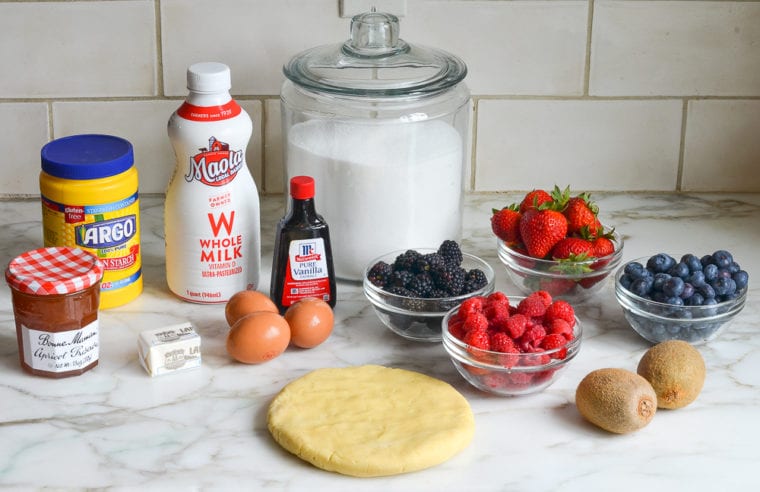
Before we get to the step-by-step instructions, a quick word about the fruit. Fresh berries are a top choice for a French fruit tart. They look pretty and colorful, and they generally stay perky longer than cut fruit. If you’d like to add a pop of additional color, mango and kiwi slices are good options, as they will not oxidize and turn brown (avoid sliced apples and bananas for this reason). It’s best to also avoid melon and other fruit with high moisture content, like sliced citrus, as these fruits will wilt quickly and seep moisture into the pastry cream.
Step-by-Step Instructions
Step 1: Prepare the Crust
Prepare the pâte sucrée recipe through baking and cooling. A pâte sucrée is a crisp yet tender pastry crust that is slightly sweet. (In French, pâte means dough and sucrée means sweet.) The dough maintains its shortbread-like texture even when chilled, which makes it ideal for tarts that require refrigeration.
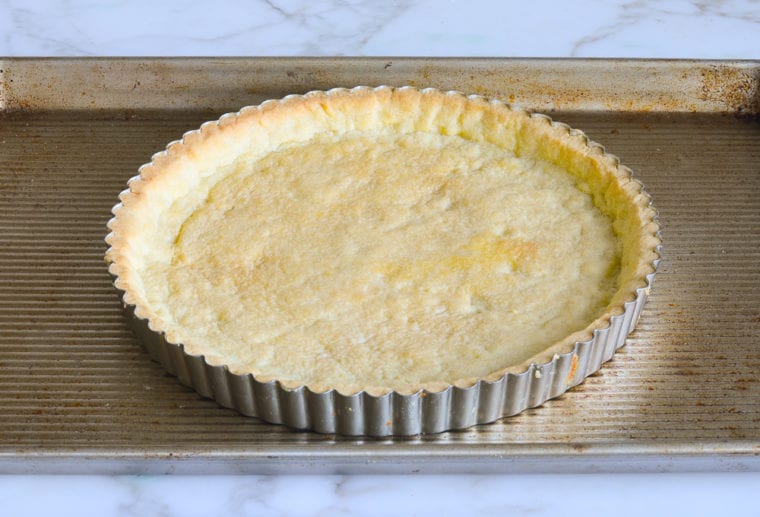
Step 2: Make the Pastry Cream
Pastry cream, or crême pâtissière, is a sweet, vanilla pudding-like custard that is used in many desserts, like cream puffs, éclairs, and fruit tarts. To make it, begin by heating the milk in a medium pot until just boiling. Remove the pot from heat.
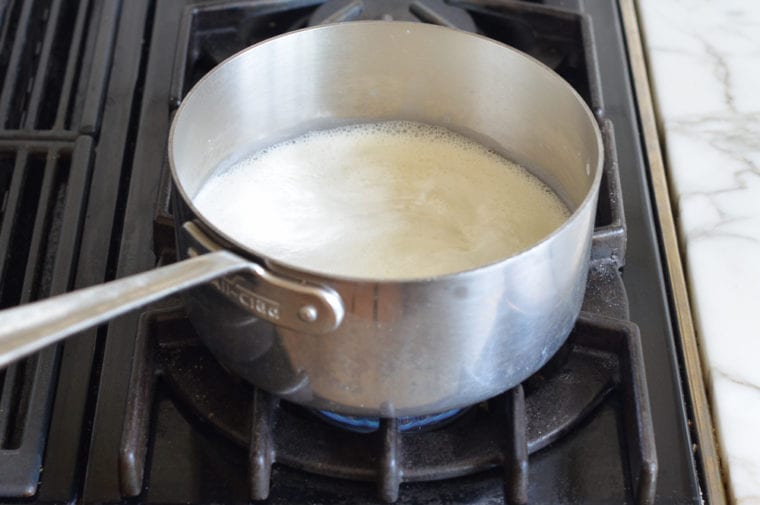
Add the sugar, egg, egg yolks, and cornstarch to a heat-proof mixing bowl.
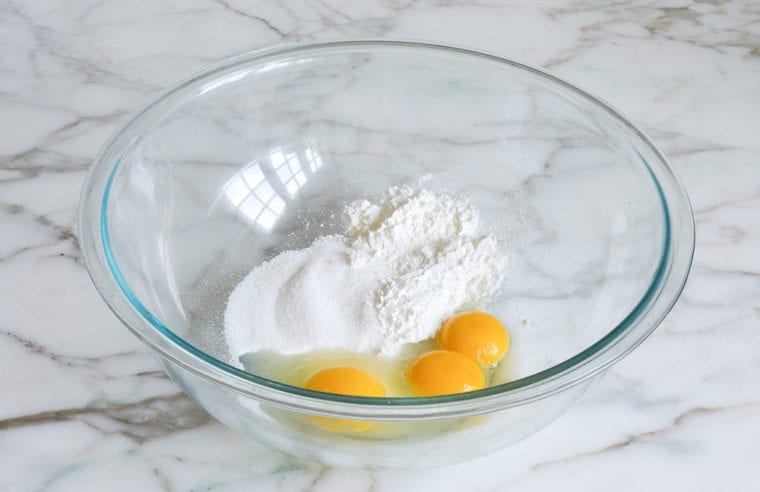
Whisk until the mixture is very smooth and has lightened in color, about 2 minutes.
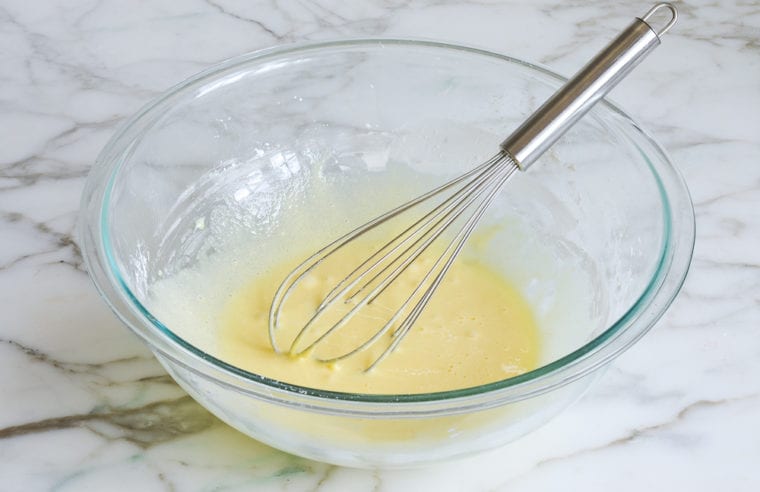
Whisking constantly, add about a quarter of the hot milk into the egg mixture.
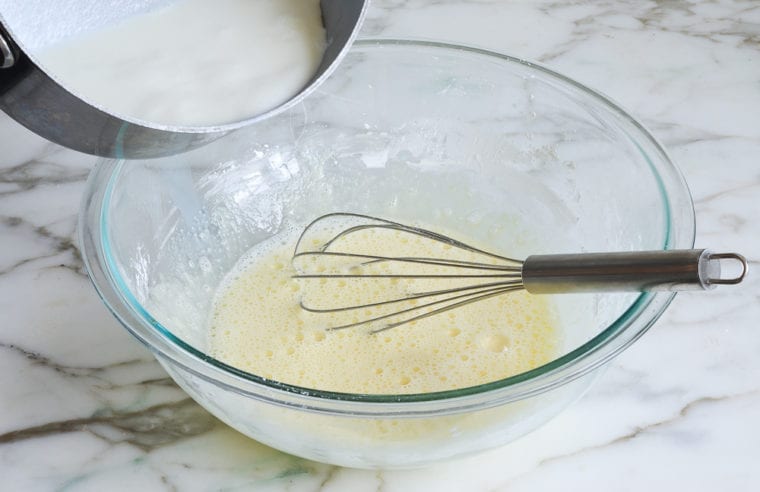
Pour the milk-tempered egg mixture into the pot of the remaining milk. Whisk to combine.
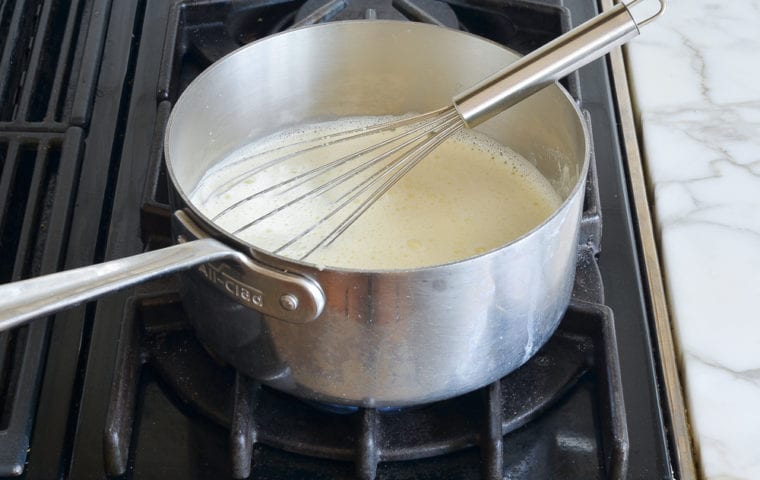
Return the pot to the heat and cook over medium heat, whisking constantly to prevent “scrambled eggs,” especially on the sides and bottom, until the pastry cream thickens, about 2 minutes. A flat whisk is ideal for this task. Stir in the butter and vanilla.
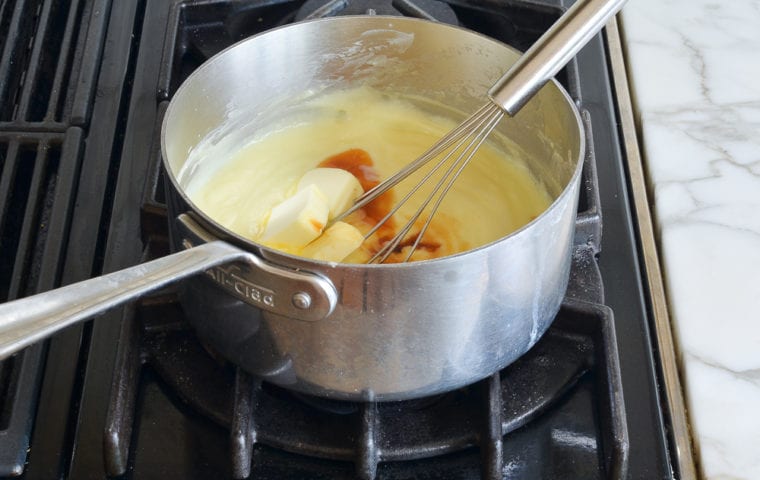
Cook one minute more, whisking constantly. The pastry cream should make thick, lazy bubbles.
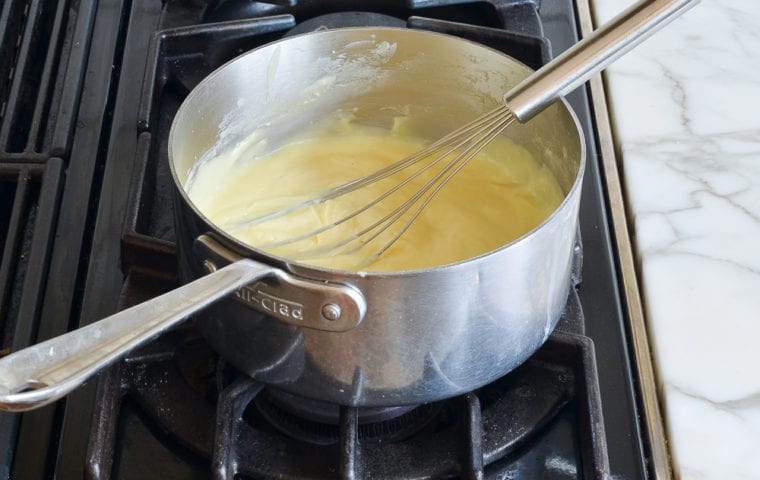
Pour the thickened pastry cream into a clean, shallow bowl. Cover it with plastic wrap and push it down in the bowl so it sits directly on the surface of the pastry cream. This prevents a skin from forming on top. Chill until cold, a few hours or up to 2 days.
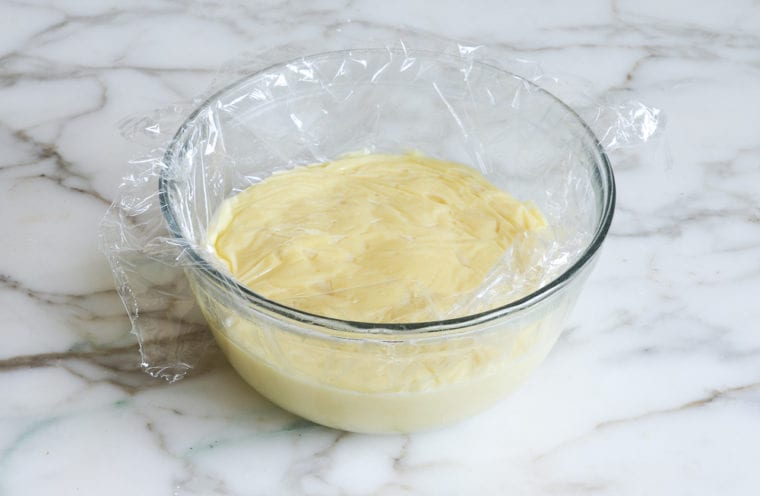
Step 3: Assemble the Fruit Tart
Remove the tart ring and transfer the tart shell to a serving platter. Whisk the chilled pastry cream until smooth, then spread it evenly into the tart shell using an offset spatula.
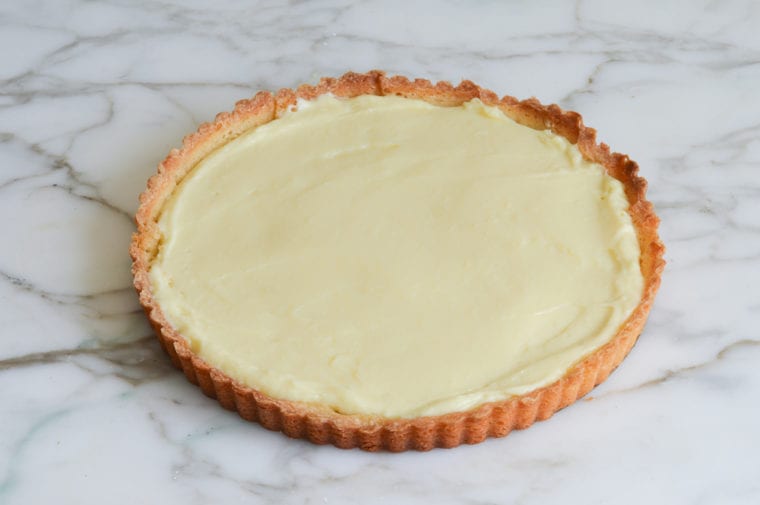
Arrange a generous amount of fruit over the pastry cream in your desired design. As mentioned above, you can do a more traditional French design of concentric circles of arranged fruit (see bottom of post for an example), a free-form fruit pattern, or a mix. Be sure to be generous with the fruit and cover the pastry cream completely.
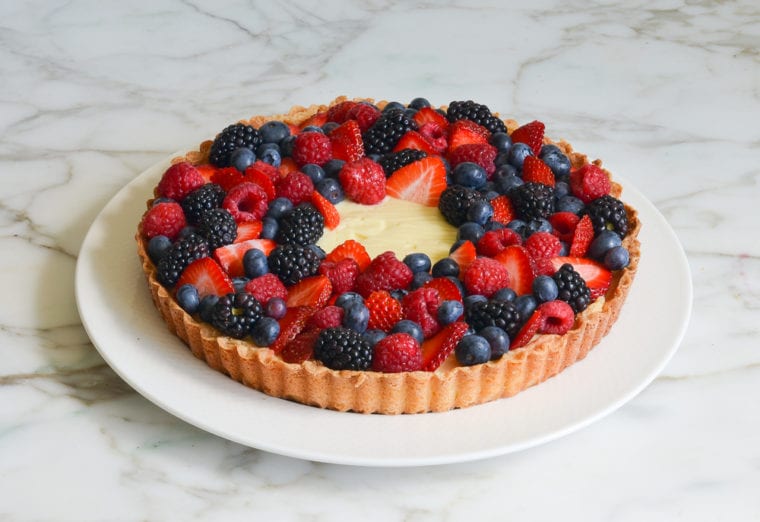
If you’d like to do a mango or kiwi slice rosette in the center, leave a space in the middle of the tart. Start from the outside and work your way to the center, overlapping each slice a little on top of the next.
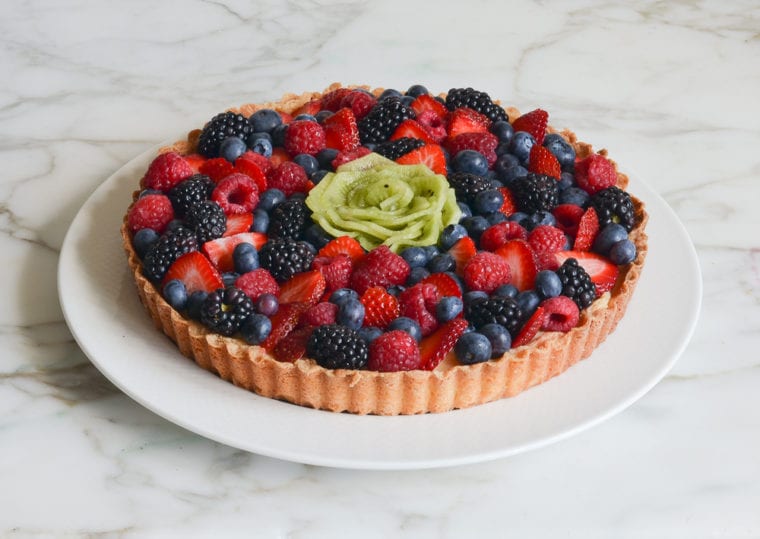
Finally, heat the apricot jam with a tablespoon of water and dab it over the fruit. This glaze makes the fruit tart shine and also locks in the fruit’s freshness.
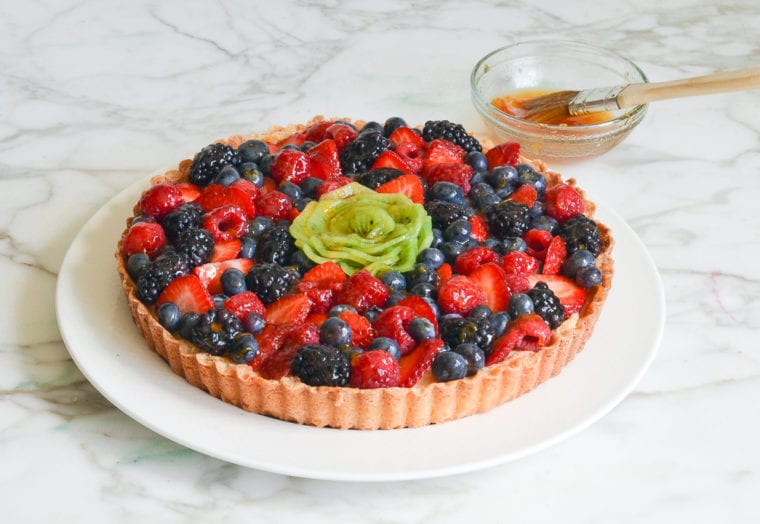
You May Also Like
Classic French Fruit Tart
Whip up a French fruit tart that could dazzle in the window of a fancy bakery—with its buttery shortbread crust, luscious vanilla custard, and a vibrant mix of fresh fruits, it’s a simple yet elegant treat for any occasion.
Ingredients
- 1 recipe pâte sucrée (sweet tart dough)
- 2 cups whole milk (do not substitute low-fat or skim milk)
- ½ cup sugar
- 3 tablespoons cornstarch
- 1 large egg
- 2 large egg yolks
- 3 tablespoons unsalted butter, cut into pieces
- 2 teaspoons vanilla extract
- About 4 cups fresh mixed berries of choice, plus other fruits, such as sliced kiwi or mango (see note)
- ¼ cup apricot jam
Instructions
- Make the Crust: Complete the pâte sucrée through baking and cooling.
- Make the Pastry Cream: In a medium pot, heat the milk until just boiling. Remove the pot from heat. While the milk is warming, in a heat-proof mixing bowl, whisk together the sugar, egg, egg yolks, and cornstarch. Whisk until the mixture is very smooth and has lightened in color, about 2 minutes. Whisking constantly, add about a quarter of the hot milk into the egg mixture. (This is called tempering. Tempering the eggs helps raise their temperature without cooking them, and helps emulsify them into the milk.) Pour the milk-tempered egg mixture into the pot of the remaining milk. Whisk to combine. Return the pot to the heat and cook over medium heat, whisking constantly to prevent “scrambled eggs,” especially on the sides and bottom, until the magic happens and the pastry cream thickens, about 2 minutes. Stir in the butter and vanilla and cook one minute more, whisking constantly. The pastry cream should make thick, lazy bubbles. (See note below if you see any coagulated bits of egg in your custard.) Pour the thickened pastry cream into a clean, shallow bowl. Cover it with plastic wrap and push it down in the bowl so it sits directly on the surface of the pastry cream. This prevents a skin from forming on top. Chill until cold, a few hours (or up to 2 days before serving).
- Assemble the Tart: Remove the tart ring and transfer the tart shell to a serving platter. Whisk the chilled pastry cream until smooth, then spread it evenly into the tart shell using an offset spatula. Arrange a generous amount of fruit over the pastry cream in your desired design. In a small saucepan, heat the apricot jam with 1 tablespoon of water over medium heat, whisking, until thin. (Alternatively, heat it in a heat-proof bowl in the microwave for about 30 seconds.) If the jam is especially chunky, strain it through a sieve. Use a pastry brush to gently dab the fruit with a thin layer of apricot glaze. Chill until ready to serve.
- Note: Avoid melon and other fruit with high moisture content, like sliced citrus. These will wilt quickly and seep moisture into the pastry cream. Also avoid oxidizing fruit like apples and bananas; these fruits will turn brown. Berries should be fully dried after rinsing (raspberries should not be washed) and strawberries should be sliced.
- Note: If you see any coagulated egg bits in your finished custard, strain the hot pastry cream through a fine mesh strainer.
- Make-Ahead Instructions: The pastry cream can be made up to 2 days before serving. The tart can be assembled and refrigerated up to one day before serving.
Nutrition Information
Powered by ![]()
- Per serving (10 servings)
- Calories: 349
- Fat: 16 g
- Saturated fat: 10 g
- Carbohydrates: 47 g
- Sugar: 29 g
- Fiber: 2 g
- Protein: 5 g
- Sodium: 95 mg
- Cholesterol: 108 mg
This website is written and produced for informational purposes only. I am not a certified nutritionist and the nutritional data on this site has not been evaluated or approved by a nutritionist or the Food and Drug Administration. Nutritional information is offered as a courtesy and should not be construed as a guarantee. The data is calculated through an online nutritional calculator, Edamam.com. Although I do my best to provide accurate nutritional information, these figures should be considered estimates only. Varying factors such as product types or brands purchased, natural fluctuations in fresh produce, and the way ingredients are processed change the effective nutritional information in any given recipe. Furthermore, different online calculators provide different results depending on their own nutrition fact sources and algorithms. To obtain the most accurate nutritional information in a given recipe, you should calculate the nutritional information with the actual ingredients used in your recipe, using your preferred nutrition calculator.

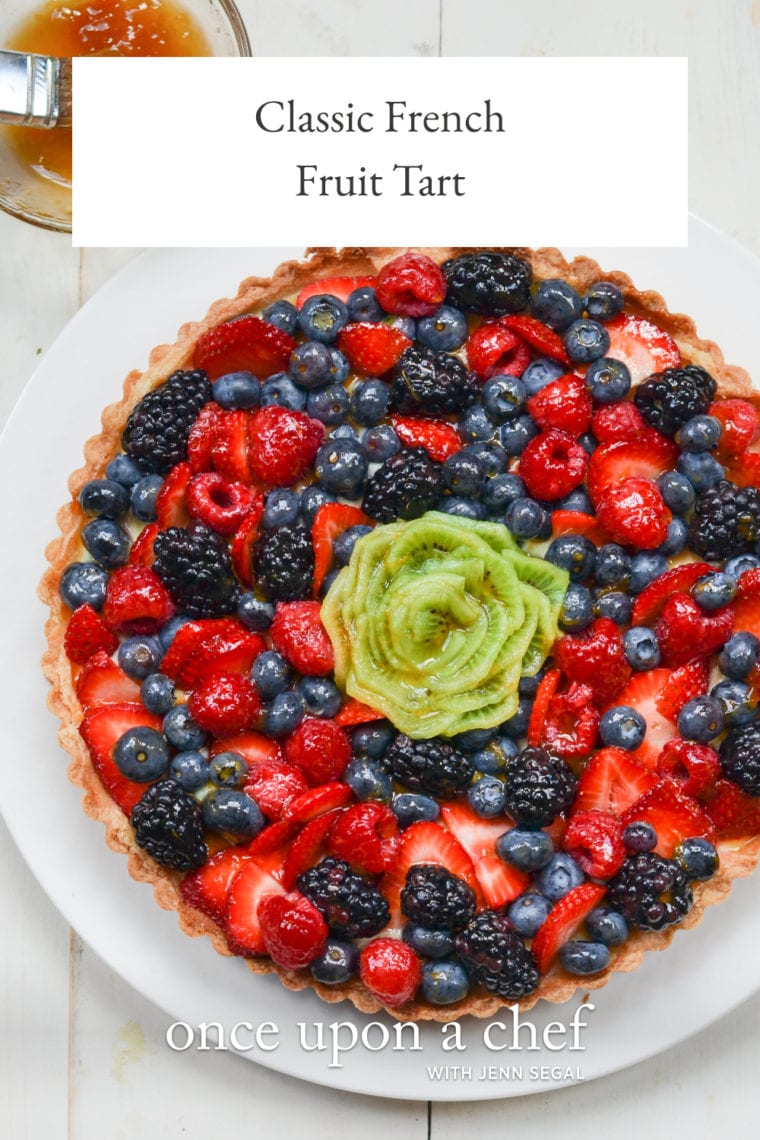
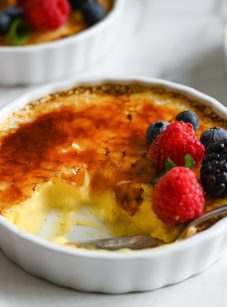
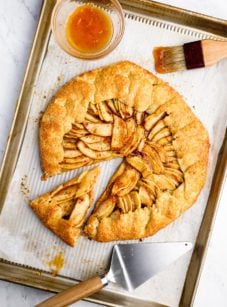
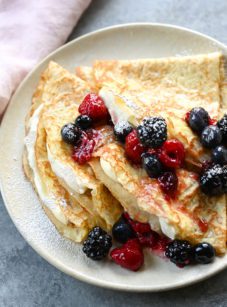
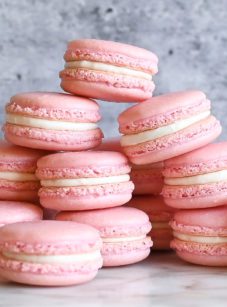
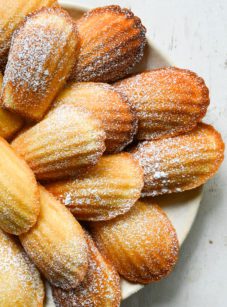
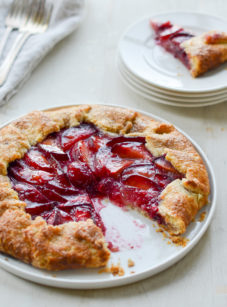
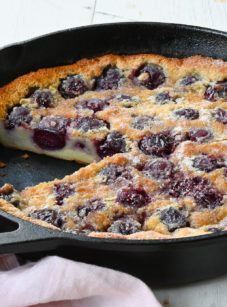
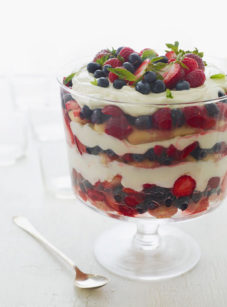
Hi Jenn. Wondering if I replaced the 2 cups of whole milk with 2 cups of coconut milk…do you think it would still work, and taste as good?
Hi Cindy, I do think it would work, although it will taste like coconut 🙂
Perfect recipe! I was worried that the pie crust was going to be too thin but it rises perfectly when cooking. Absolutely delicious and everyone loved it. Definitely a keeper.
whould !! inch tart pan work for this recipe? Thank you!
Hi Jessica, I think you’d be a little short on crust. For the best results, I’d stick a 9.5 inch pan. Sorry!
This is an *excellent* dessert! I’ve made it twice (so far–it’s going into my cookbook for sure now). The first time, I overcooked the crust, and my pastry cream came out delicious but very runny, so the tart didn’t hold when cut. The second time, I was careful with the timing of cooking the crust, and it came out perfectly shortbready. I took extra time with cooking the cream to ensure it thickened properly in the pot, and it was amazing. Lovely and creamy in the tart, but firm enough to stay put when cut into slices. I topped with fresh raspberries, blueberries and strawberries (it’s berry season), and I’ve never had a better fruit tart! One change I made was the glaze: I did a clear gelatin glaze, since I like the way it sets over the fruit, and it reminds me of the tarts from my favourite French patisserie.
This classic recipe turned out beautifully! I made this last night in honor of the Summer Olympics in Paris. We held a family watch party with all French food, and I made this fruit tart for dessert. The red, white and blue colors were perfect in symbolizing France, the U.S. and the UK. Delicious! The only constructive comment I would make is that this recipe involves a lot of stirring. It took my creme pat nine minutes to thicken instead of the two minutes mentioned in the recipe, but maybe it’s because it cooled down too much while I was tempering the egg mixture.
Wow! Such a delicious and beautiful dessert. My round tart pan is 11″ so I used my 14 x 4.5″ rectangle and it was perfect and just a beautiful. This is definitely a “keeper” recipe! Thank you!!
This was wonderful—and surprisingly easy to make for such an elegant dessert! The custard is perfectly creamy and the right amount of sweet. The shell is firm but not hard and held its shape when I cut it (I did have to add about 2 tbsp of milk along with the egg yolk to get the dough to come together). This is a great summer dessert to serve to guests. Thank you!